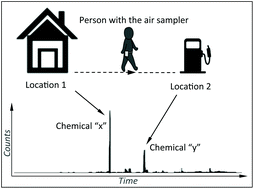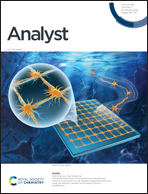An environmental air sampler to evaluate personal exposure to volatile organic compounds
Abstract
A micro fabricated chip-based wearable air sampler was used to monitor the personnel exposure of volatile chemical concentrations in microenvironments. Six teenagers participated in this study and 14 volatile organic compounds (VOCs) including naphthalene, 3-decen-1-ol, hexanal, nonanal, methyl salicylate and limonene gave the highest abundance during routine daily activity. VOC exposure associated with daily activities and the location showed strong agreements with two of the participant's results. One of these subjects had the highest exposure to methyl salicylate that was supported by the use of a topical analgesic balm containing this compound. Environmental based air quality monitoring followed by the personnel exposure studies provided additional evidence associated to the main locations where the participants traveled. Toluene concentrations observed at a gas station were exceptionally high, with the highest amount observed at 1213.1 ng m−3. One subject had the highest exposure to toluene and the GPS data showed clear evidence of activities neighboring a gas station. This study shows that this wearable air sampler has potential applications including hazardous VOC exposure monitoring in occupational hazard assessment for certain professions, for example in industries that involve direct handling of petroleum products.



 Please wait while we load your content...
Please wait while we load your content...